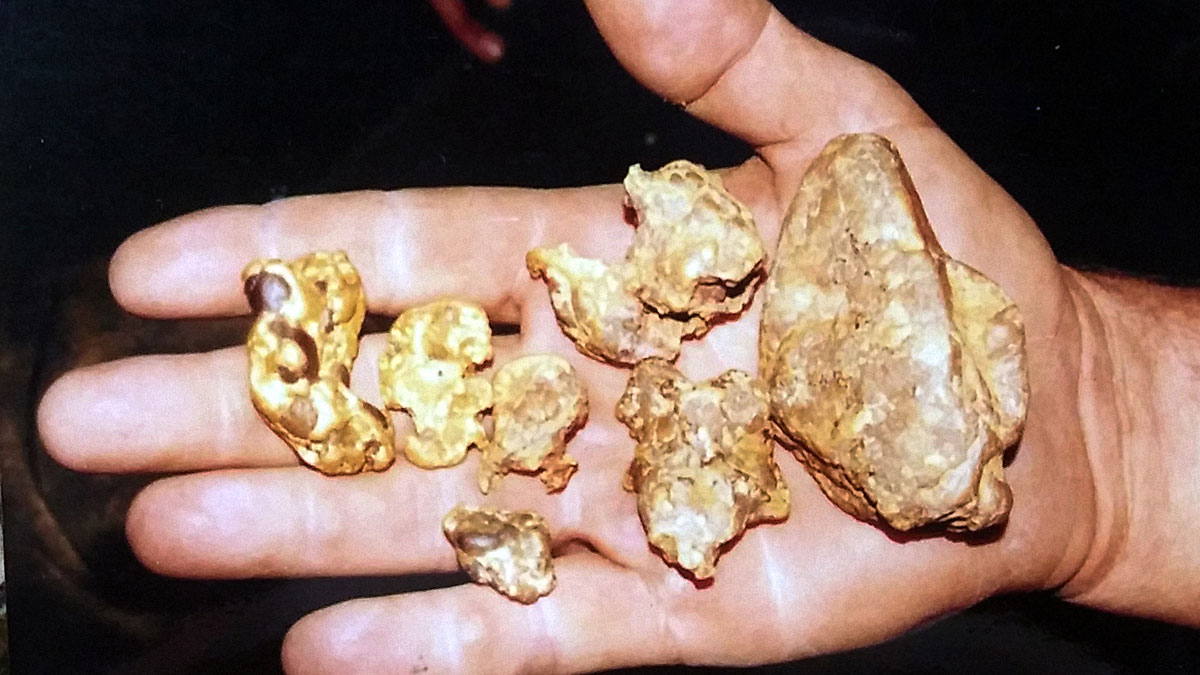Here are some of 2022’s finest mineral discoveries on the ASX

Picture: Getty Images
- At what point does a ‘discovery’ become a discovery?
- Perennial’s Sam Berridge gives us the lowdown and a few ASX stocks he reckons have made standout discoveries this year
- Plus we highlight some of 2022’s biggest intraday gainers
It’s always exciting when an ASX listed explorer announces a new ‘mineral discovery’ but what does it mean to make one and at what point does a discovery become a discovery?
Does a ‘discovery’ occur after the first drill hole, or the 10th. Or does it happen when a maiden economic resource is defined?
According to Sam Berridge, portfolio manager and resource analyst at Perennial Value Management, the threshold for declaring something as a discovery is a clear line of sight on economic viability – “and sometimes you can see that reasonably early on,” he says.
With other projects it may take a bit longer for the development potential to become clear and several factors influence whether it’s worth the cost of digging it up — such as how deep you have to dig to get to it, the consistency of the mineral grades and the size of the hit.
What is considered ‘profitable’ to mine can also vary from one country to another depending on the type of geology you have to contend with. It also depends on the price of a commodity at the time.
This is particularly the case for big, lower grade discoveries such as Chalice’s (ASX:CHN) Julimar Nickel-Copper-PGE Project discovered in 2020, Berrdige explains.
“There’s a higher-grade component which looks promising, but it remains to be seen whether a metallurgical and economically viable solution can be found for the lower grade halo which makes up the bulk of the resource tonnes,” he says.
The discovery process
Usually, once a resources company has made a discovery – either through greenfields exploration where mineral deposits have not yet been discovered, or through brownfields exploration where exploration is done close to previously discovered deposits – the next step is to grow a resource.
This means finding new information that shows an existing deposit is bigger than previously thought and from there, the focus tends to be on growing the reserves, which is the economically mineable part of a resource demonstrated by a preliminary feasibility study.
Stand-out discoveries: rare earths and lithium
But as Berridge pointed out, sometimes the economic viability of a discovery is established quite early on in the exploration process, as is the case with Dreadnought Resources (ASX:DRE) and their ‘Yin’ rare earths discovery, he says.
In his view, the project compares favourably to Hasting’s (ASX:HAS) Yangibana Project, which hosts one of the richest concentrations in the world of neodymium and praseodymium (NdPr) with a resource of 21Mt at NdPr TREO ratios of 41%.
Back in July, DRE hit thick intersections of up to 35m at 2.75% TREO from 94m, which confirmed the Yin ironstone within its Mangaroon project as a high-grade rare earths discovery.
Since then, the company has continued to grow the Yin discovery with assays revealing more thick and high-grade mineralised zones as the neodymium-praseodymium-to-TREO ratio increases to the north, returning values of up to 46% – over double the global average.
“They don’t have a resource yet, but you can see from the intersections that it is clearly going to be a decent size resource – the grades look to be higher than other projects in the neighbourhood suggesting that the economic viability of this project is probable,” Berridge explains.
In less that 5-minutes, Managing Director, Dean Tuck can tell you why to invest in Dreadnought Resources…and that’s exactly what he did at the Steak Sandwich Showdown at Diggers & Dealers! pic.twitter.com/UvKDc2DGc6
— Dreadnought Resources (@Dreadnought_Res) August 11, 2022
Davide Bosio, Shaw and Partners WA state manager and director agrees.
“Dreadnought and their enormous, rare-earth success at Yin has been the main standout in terms of mineral discoveries for me this year,” he says.
But there are some other winners, Berridge says.
Like Lithium Energy (ASX:LEL) which put its first drill hole into what looks like “a pretty sizeable lithium brine deposit” in Argentina back in October, right next door to Allkem’s (ASX:AKE) production assets where lithium has been produced for the past seven years.
“Initial signs are promising but they have only drilled one well to date,” Berridge says.
Other worthy mention, he says, includes companies that have made solid brownfield exploration moves such as Nova Minerals (ASX:NVA) with its RPM gold discovery.
In August, NVA hit 78m at 16g/t within 258m at 5.1g/t as part of a targeted program designed to allow for further increases to potential measured and indicated resources in the next mineral resource estimate.
“It will be interesting to see how the tonnes bulk out as drilling progresses,” he adds.
Chalice and De Grey still take the cake
But while each of these discoveries are meaningful in their own right, Berridge says it is hard to compare with the discoveries made by De Grey (ASX:DEG) and Chalice (ASX:CHN) in years gone by.
“They both put a fire under the entire junior exploration sector. For years prior, junior explorers weren’t really getting any reward for reporting promising drill results,” he explains.
“Largely thanks to DEG and CHN, risk capital for junior explorers is available again.
“The adage of value over volume has been drummed into this industry enough times now that companies see organic growth or brownfield exploration as being lower risk than greenfields exploration.
“However, greenfields exploration is what is required for the big discoveries and that requires risk capital to be thrown at it to a greater extent than is happening today.”
What does the market say?
Here are some of the ASX stocks that made intraday gains above 100% in 2022 as a consequence of mineral discoveries.
Tempest Minerals (ASX:TEM) +265%
Tempest surged 265% after making a big copper discovery in its very first hole at ‘Orion’, part of the flagship ‘Meleya’ Project in WA.
The first 709m-long hole of a two-hole diamond drilling program — mostly designed to test the geology of this untested area — pulled up three mineralised copper sections.
“To make a new discovery on our very first hole into an entirely untested region far exceeds our expectations,” TEM managing director Don Smith says.
Recharge Metals (ASX:REC) +238%
Recharge Metals hit 300m of copper mineralisation in drilling at the flagship Brandy Hill South Project in WA.
Historical drilling at Brandy Hill recorded some nice hits, including 75m at 0.55% copper with a 23m zone returning 1.29% copper, with silver and tungsten values.
Initially, REC was looking to confirm some of the historical hits as well as extending mineralisation in a maiden drilling campaign.
Three holes from that drilling program were recently extended with diamond ‘tails’ to chase the vein-hosted mineralisation at depth.
WA1 Resources (ASX:WA1) +220%
WA1 announced the discovery a niobium-rare earths carbonatite mineralised system at the West Arunta project in WA after its only drill hole into the P2 target, part of the Pachpadra prospect area, pulled up thick, high grade numbers like 54m at 0.62% niobium, 0.18% rare earths and 3.85% phosphorus from 162m.
The 216m-long hole ended in 2m at 1.22% Nb2O5, 0.22% TREO, and 5.73% P2O5.
It shot up another 35% the following day for a cumulative two day gain of ~580%.
Galileo Mining (ASX:GAL) +220%
Mark Creasy-backed GAL exploded out of the blocks back in May after announcing a major palladium-platinum discovery at the ‘Norseman’ project in WA.
The discovery hole at the ‘Callisto’ prospect returned a 33m-long intersection grading 2g/t 3E (1.64g/t palladium, 0.28g/t platinum, 0.09g/t gold), 0.32% copper & 0.30% nickel from 144m.
This 33m assayed intersection occurs within a wider 55m disseminated sulphide zone (126–181m) “indicating the potential for a large mineralised system”, GAL said at the time.
Cobre Resources (ASX:CBE) +100%
Cobre surged +100 back on July 27 after revealing a first diamond drill hole intersected a broad zone of copper, one of the main commodities at the heart of most electrical technologies, over a 59m interval.
A second diamond hole is currently in progress, positioned only 1km away along strike.
“This new copper discovery represents a transformational moment for Cobre shareholders,” CBE executive chairman and MD Martin Holland said.
“Cobre has never been in a better position from a project ownership, technical and operation perspective.
“And now we have a promising copper intersection, on one of the most prospective copper belts in the world.”
Related Topics

UNLOCK INSIGHTS
Discover the untold stories of emerging ASX stocks.
Daily news and expert analysis, it's free to subscribe.
By proceeding, you confirm you understand that we handle personal information in accordance with our Privacy Policy.








